What Is Connected Learning?
Connected learning is when someone is pursuing a personal interest with the support of peers, mentors and caring adults, and in ways that open up opportunities for them. It is a fundamentally different mode of learning than education centered on fixed subjects, one-to-many instruction, and standardized testing. The research is clear. Young people learn best when actively engaged, creating, and solving problems they care about, and supported by peers who appreciate and recognize their accomplishments. Connected learning applies the best of the learning sciences to cutting-edge technologies in a networked world. While connected learning is not new, and does not require technology, new digital and networked technologies expand opportunities to make connected learning accessible to all young people.The “connected” in connected learning is about human connection as well as tapping the power of connected technologies. Rather than see technology as a means toward more efficient and automated forms of education, connected learning puts progressive, experiential, and learner-centered approaches at the center of technology-enhanced learning.
Connected Learners
Connected learners have a web of relationships and organizations that support their learning, beyond the formal educational pipeline.
Why Connected Learning? Why Now?
Traditional education is failing to engage many students as they enter their middle school, high school, and college years. The culture clash between formal education and interest-driven, out-of-school learning is escalating in today’s world where social communication and interactive content is always at our fingertips. We need to harness these new technologies for learning rather than distraction.
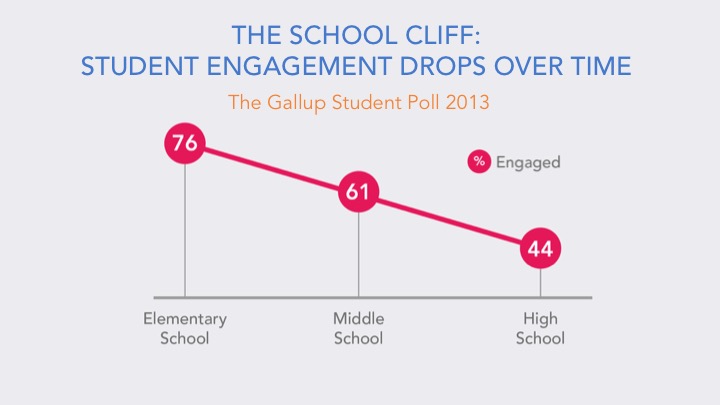
While wealthy families are embracing the potential of new technologies for learning, and investing more and more in out-of-school and connected learning, less privileged kids are being left behind. Access to specialized, interest-driven and personalized learning used to be difficult and scarce. But in today’s networked world, there’s no reason why all children should not have the opportunity to pursue connected learning.
Connected Learning in Practice
Connected learning isn’t a burden that one organization shoulders on its own, and is about building connections across different sites of learning.
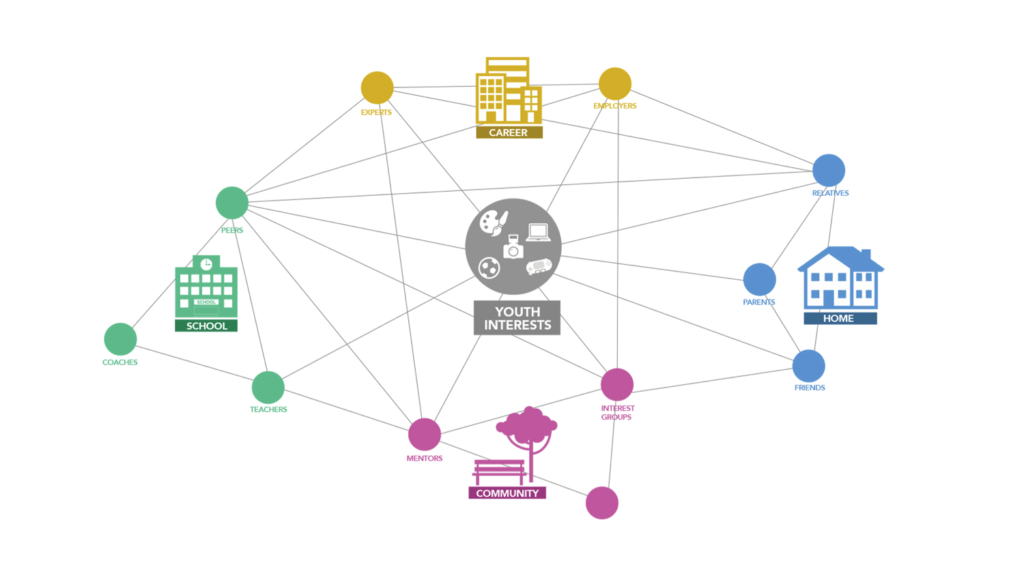
Graphic by Nat Soti.
Some examples of connected learning in action:
- YouMedia learning labs are youth makerspaces across the country, centered on technology and digital media production. Located in libraries and museums, these spaces are staffed by mentors who embody young people’s interests, and design shared projects that engage youth in the learning labs and beyond. http://community.youmedia.org/home
- Quest to Learn is a unique middle and high school in New York City that was founded by game designers and educators and embodies a game-based approach to teaching and learning. Quest to Learn connects young people’s interests in gaming to academic achievement through collaborative challenges and problem solving. http://www.q2l.org/
- Connected Camps is a benefit corporation that offers virtual summer camps and afterschool programs in the game of Minecraft. High school and college Minecraft experts are trained to teach younger kids coding, engineering, game design, and digital citizenship. The programs mine the enthusiasm that kids have for the most popular game of all time, by building connections with mentors who share their interest and help them level up in high-tech skills. http://connectedcamps.com/
- For more examples of educators who have embraced connected learning, visit educatorinnovator.org.
Principles of Connected Learning
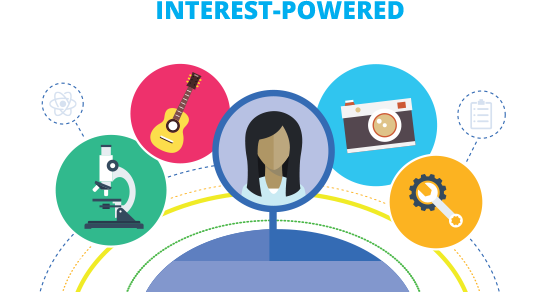
Interest Powered
Interests foster the drive to gain knowledge and expertise. Research has repeatedly shown that when the topic is personally interesting and relevant, learners achieve much higher-order learning outcomes. Connected learning views interests and passions that are developed in a social context as essential elements.
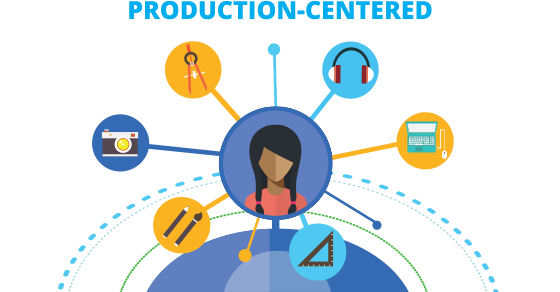
Production Centered
Connected learning prizes the learning that comes from actively producing, creating, experimenting and designing because it promotes skills and dispositions for lifelong learning and for making meaningful contributions to today’s rapidly changing work and social conditions.
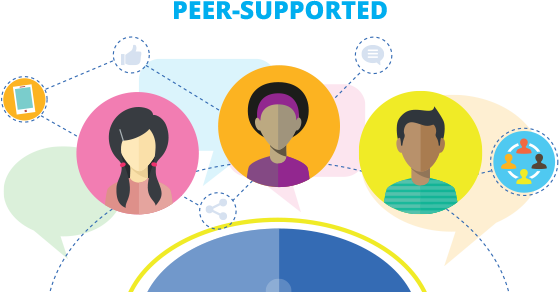
Peer Supported
Connected learning thrives in a socially meaningful and knowledge-rich ecology of ongoing participation, self-expression and recognition. In their everyday exchanges with peers and friends, young people fluidly contribute, share and give feedback. Powered with possibilities made available by today’s social media, this peer culture can produce learning that’s engaging and powerful.
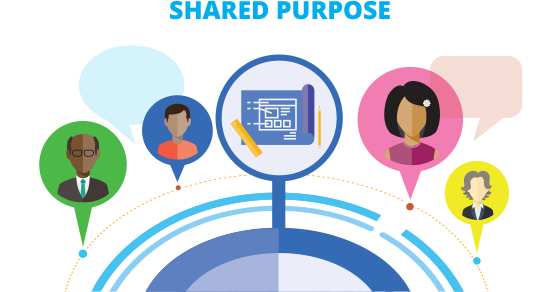
Shared Purpose
Today’s social media and web-based communities provide unprecedented opportunities for caring adults, teachers, parents, learners and their peers to share interests and contribute to a common purpose. The potential of cross-generational learning and connection unfolds when centered on common goals.
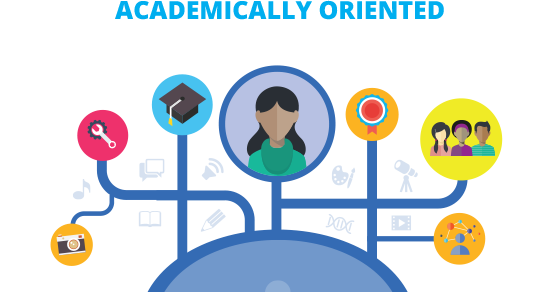
Academically Oriented
Connected learning recognizes the importance of academic success for intellectual growth and as an avenue towards economic and political opportunity. When academic studies and institutions draw from and connect to young people’s peer culture, communities and interest-driven pursuits, learners flourish and realize their true potential.
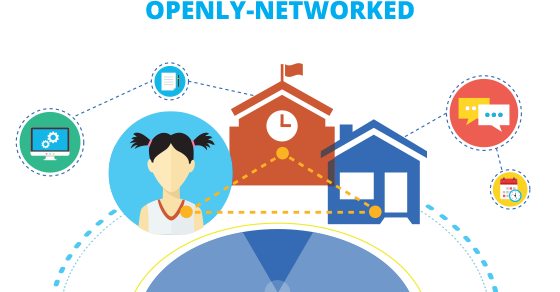
Openly Networked
Connected learning environments link learning in school, home and community because learners achieve best when their learning is reinforced and supported in multiple settings. Online platforms can make learning resources abundant, accessible and visible across all learner settings.
Also see the Connected Learning Infographic for another explanation of these principles.

